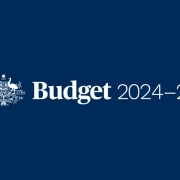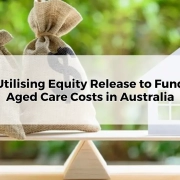How does rising cost of living affect Aged Care fees?
Table of Contents
ToggleMany Australians are feeling the pinch of rising living costs, and for seniors and their families considering or currently utilising aged care services, the financial strain can be especially worrying. Understanding how these rising costs impact your aged care fees is crucial for making informed decisions and ensuring the best possible care for your loved ones.
In this blog post, we’ll break down the different types of aged care fees and explain how each is impacted by the current economic climate. We’ll also offer practical tips and resources to help you manage these rising costs and ensure your loved ones receive the care they deserve.
Breaking down the impact
Let’s delve into how the rising cost of living affects the different types of aged care fees:
Daily Care Fees
- Rising costs mean higher expenses for aged care providers. This includes staff wages, food, and utilities, all of which have seen significant increases lately. To cover these costs, some providers may need to adjust daily care fees.
- The Australian Government sets a base rate for daily care fees, but providers have some flexibility to add a margin to cover their operational costs. Keep an eye on any changes to the base rate or your provider’s margin
Accommodation Fees
- Two types of accommodation fees exist: refundable and non-refundable. Both are calculated based on a percentage of the Residential Accommodation Deposit (RAD).
- Rising interest rates directly impact refundable accommodation fees. As interest rates climb, the daily fee charged on unpaid RADs increases. This can mean a significant rise in your out-of-pocket costs.
- Non-refundable fees might also be affected if providers need to adjust their pricing structure to remain financially sustainable.
Additional Service Fees
- These fees cover optional services like hairdressing, podiatry, or internet access.
- To offset rising costs, providers may introduce new service fees or increase existing ones. Remember, these are optional, so carefully consider if they’re essential for your loved one’s well-being before committing.
Navigating the challenges
Rising aged care costs can understandably cause worry, but remember, you have options and support available. Here are some practical tips and resources to help you navigate these challenges:
Understanding Government Support
- The Australian Government offers various subsidies and support programs to help ease the financial burden of aged care. Explore My Aged Care for details on means-tested assistance, basic daily fee subsidies, and other financial support options.
- Understanding your eligibility for these programs can significantly reduce your out-of-pocket costs. Consider seeking help from a financial advisor or aged care specialist for personalised guidance.
Exploring Funding Options
- Home Equity Release can be a viable option if you own a property and want to access some of its value to help pay for aged care. However, carefully assess the risks and implications before making a decision.
- Downsizing to a smaller home could free up capital that can be used towards aged care costs.
- Other financial products like reverse mortgages may also be an option, but thorough research and professional advice are crucial.
Budgeting and Planning
- Creating a detailed budget that factors in all expected aged care costs is essential. Consider including daily care fees, accommodation, potential service fees, and any additional expenses.
- Communicate openly with your loved one and family about finances. Transparency and shared understanding can ease anxieties and lead to informed decisions.
- Regularly review your budget and adjust as needed. Unexpected expenses or changes in care needs may arise, so flexibility is key.
Communicating with Providers
- Open and honest communication with your aged care provider is crucial. Don’t hesitate to ask questions about fee structures, potential changes, and alternative options.
- Request detailed breakdowns of fees and understand what’s included and excluded. This transparency can help you make informed choices about the care your loved one receives.
Remember, you’re not alone in navigating these challenges. By understanding the available resources, exploring funding options, communicating effectively, and planning strategically, you can ensure your loved one receives the care they deserve, even amidst rising costs.
Rising costs can undoubtedly create uncertainty when planning for aged care. However, remember, you have options, resources, and support available. Understanding the impact of rising costs on different fee types, exploring the valuable tools and strategies outlined above, and utilising the provided resources can empower you to navigate these challenges with confidence.









